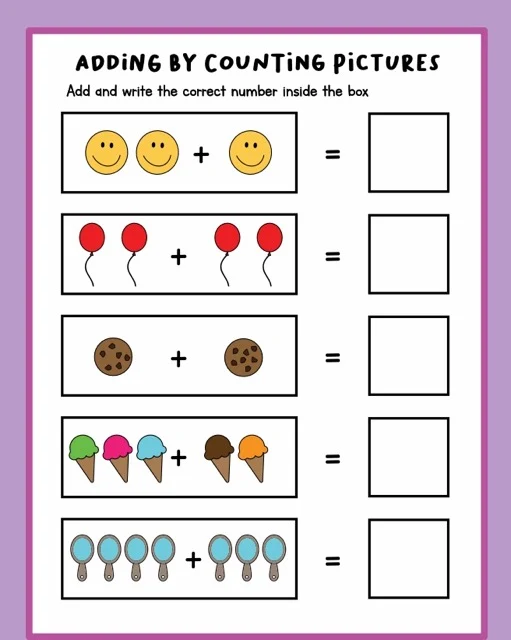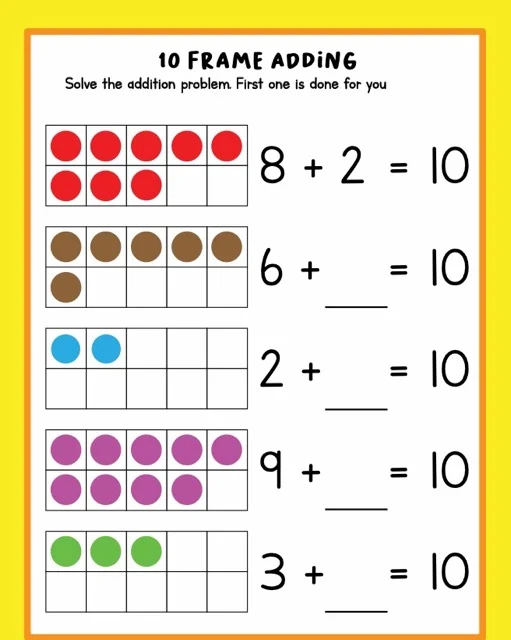Understanding Mathematical Addition
Three sources— "Exploring Addition," "Testing Theme: Addition.pdf," and "Understanding Addition"—explore the concept of mathematical addition. They define addition using the "+" symbol, explain the resulting "sum," and detail the commutative and associative properties. The sources also discuss the broader application of addition in everyday life, such as budgeting and cooking, and the importance of symbols like "=" and parentheses. While two sources provide textual explanations, one relies primarily on visual representations, suggesting an opportunity for further research.
Exploring the Concept of Addition
Briefing Doc: Exploring the Concept of Addition
This briefing doc reviews the main themes and key facts presented across three sources: "Exploring Addition," "Testing Theme: Addition.pdf," and "Understanding Addition." The analysis focuses on the symbolic representation of addition, its properties, and its significance in mathematics and daily life.
Core Symbol and Meaning:
All sources emphasize the "+" symbol as the primary representation of the mathematical operation of addition. As stated in "Exploring Addition," this symbol "signifies the mathematical operation of addition. It instructs us to combine two or more quantities to find their total" ("Answer Key," Q1). "Understanding Addition" reinforces this, explaining that placing the "+" symbol between numbers "instructs us to add those numbers together" (FAQ, Q2).
The Concept of Sum:
The concept of "sum" as the result of addition is consistently highlighted. "Exploring Addition" defines the sum as "the result obtained when two or more numbers are added together" ("Answer Key," Q2). "Understanding Addition" echoes this definition, stating that the sum is "the result of adding two or more numbers" (FAQ, Q3).
Properties of Addition:
The sources detail the commutative and associative properties of addition. "Exploring Addition" explains:
●
Commutative Property: "the order of numbers being added does not affect the final sum" ("Answer Key," Q4).
●
Associative Property: "grouping numbers differently during addition does not alter the sum" ("Answer Key," Q5).
"Understanding Addition" reiterates these properties in its FAQ section (Q6).
Beyond Numerical Addition:
While focusing on mathematical addition, the sources acknowledge the broader application of the "+" symbol and the concept of combining. "Exploring Addition" suggests that "+" can "extend to signify combining elements in non-numerical contexts, like adding ingredients in a recipe" ("Answer Key," Q3). "Understanding Addition" similarly notes that combining can be applied to areas like recipes and shopping lists (FAQ, Q4).
Importance and Practical Applications:
The sources underscore the practical importance of addition in daily life. "Exploring Addition" states that "addition is fundamental to countless daily activities, from calculating expenses during shopping to managing time effectively" ("Answer Key," Q8). "Understanding Addition" emphasizes that "addition is a fundamental skill used in countless everyday situations" for various tasks like shopping, cooking, and budgeting (FAQ, Q7).
Other Key Symbols:
Beyond the "+" symbol, the sources highlight the equals sign ("=") as crucial for representing the result of addition. Parentheses "( )" are also discussed for their role in dictating the order of operations in complex addition problems.
Gaps and Further Exploration:
While "Testing Theme: Addition.pdf" visually presents the core symbols of addition, it lacks textual explanation. Further analysis of visual representations of addition and their impact on understanding could be beneficial. Additionally, exploring how the concept of addition evolves in higher mathematical concepts could provide a more comprehensive understanding.
Understanding Addition
FAQ
1. What is the symbol "+" used for?
The symbol "+" represents the mathematical operation of addition. It signifies combining two or more quantities together.
2. How do we use the "+" symbol in mathematics?
When we place the "+" symbol between two numbers, it instructs us to add those numbers together. For example, 3 + 4 means we need to combine the quantity 3 with the quantity 4.
3. What is the result of adding two numbers together called?
The result of adding two or more numbers is called the sum. In the example 3 + 4 = 7, the sum is 7.
4. Can we use "+" to combine things other than numbers?
While "+" primarily represents mathematical addition, the concept of combining can be applied to other areas. For instance, we might talk about "adding" ingredients in a recipe or "adding" items to a shopping list.
5. Is there a limit to how many numbers we can add together?
No, there is no limit to how many numbers we can add together. We can add two numbers, three numbers, a hundred numbers, or even more!
6. Are there any special rules for using the "+" symbol?
The "+" symbol follows the commutative property, meaning the order in which we add numbers doesn't affect the sum (e.g., 2 + 3 = 3 + 2). It also follows the associative property, meaning we can group numbers being added in any way without changing the sum (e.g., (1 + 2) + 3 = 1 + (2 + 3)).
7. How does understanding addition help us in everyday life?
Addition is a fundamental skill used in countless everyday situations. We use it for shopping, cooking, budgeting, time management, and much more.
8. What are some other symbols related to addition?
Other symbols related to addition include the equals sign "=" which shows the result of the addition, and sometimes parentheses "( )" which are used to indicate the order of operations when multiple additions are involved.
Exploring Addition
Addition Exploration
Short-Answer Quiz
Instructions: Answer the following questions in 2-3 sentences.
1.
What is the primary function of the "+" symbol in mathematics?
2.
Explain what is meant by the "sum" in an addition problem. Provide an example.
3.
Can the "+" symbol be used to represent actions beyond numerical addition? Explain.
4.
Describe the commutative property in relation to the "+" symbol.
5.
Describe the associative property in relation to the "+" symbol.
6.
Explain the role of the equals sign ("=") in an addition problem.
7.
How are parentheses "( )" utilized in more complex addition scenarios?
8.
What practical significance does addition hold in daily life?
9.
Apart from the "+" symbol, what other symbol plays a crucial role in representing addition operations?
10.
If we see a plus sign between two items that are not numbers, like "apple + orange," how might we interpret this?
Answer Key
1.
The "+" symbol signifies the mathematical operation of addition. It instructs us to combine two or more quantities to find their total.
2.
The "sum" refers to the result obtained when two or more numbers are added together. For instance, in the equation 5 + 3 = 8, the sum is 8.
3.
Yes, although primarily representing mathematical addition, the concept of "+" can extend to signify combining elements in non-numerical contexts, like adding ingredients in a recipe.
4.
The commutative property implies that the order of numbers being added does not affect the final sum. For example, 2 + 5 yields the same sum as 5 + 2.
5.
The associative property states that grouping numbers differently during addition does not alter the sum. For example, (1 + 4) + 3 results in the same sum as 1 + (4 + 3).
6.
The equals sign ("=") in an addition problem signifies that the values on both sides of the equation are equivalent, showing the result of the addition.
7.
Parentheses "( )" are employed to dictate the order of operations in more complex addition problems, ensuring certain additions are performed before others.
8.
Addition is fundamental to countless daily activities, from calculating expenses during shopping to managing time effectively.
9.
The equals sign ("=") is another crucial symbol in addition, indicating the result of the addition operation.
10.
A plus sign between non-numerical items like "apple + orange" could represent a symbolic combination or grouping of those items, rather than a mathematical sum.
Essay Questions
1.
Discuss the fundamental principles of addition and how they are represented by the "+" symbol. Use specific examples to illustrate your points.
2.
Explore the concept of the sum in addition. How is it determined, and what does it represent in a mathematical expression?
3.
Analyze the commutative and associative properties of addition. How do these properties affect the way we approach and solve addition problems?
4.
Beyond its mathematical application, how does the concept of addition, as represented by the "+" symbol, manifest in other areas of our lives?
5.
Explain the importance of understanding the order of operations, particularly the role of parentheses, in solving more complex addition problems.
Glossary of Key Terms
●
Addition: The mathematical operation of combining two or more quantities to determine their total value.
●
Plus Symbol (+): The symbol used to represent the operation of addition.
●
Sum: The result obtained when two or more numbers are added together.
●
Equals Sign (=): The symbol used to indicate that the values on both sides of an equation are equivalent.
●
Commutative Property: The principle that the order of numbers being added does not affect the sum.
●
Associative Property: The principle that grouping numbers differently during addition does not alter the sum.
●
Parentheses ( ): Symbols used to dictate the order of operations in mathematical expressions, ensuring certain operations are performed before others.
●
Order of Operations: The established rules that determine the sequence in which operations are performed in a mathematical expression.
























